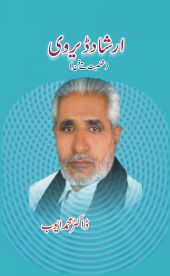مولانا محمد کفیل فاروقی
دنیا میں کتنے ہی ارباب علم وفضل اوراصحاب مجدو کمال ہیں جو اپنے وقت کے جید عالم ہوتے ہیں اور بڑے لگن اور خلوص کے ساتھ شب و روز درس و تدریس، مطالعہ اورتصنیف وتالیف میں مشغول رہتے ہیں لیکن شہرت ونام ونمود کی دنیاسے الگ تھلگ رہنے کے باعث ان کے کمالات کاعلم صرف ان چند لوگوں کو ہوتاہے جواُن کے حلقۂ احباب یا حلقۂ تلامذہ میں شامل ہوتے ہیں۔ان کے علاوہ کسی کو خبربھی نہیں ہوتی کہ وہ کس پایہ کے عالم وفاضل تھے ان کامطالعہ کتنا وسیع تھااورعلمی وفنی مباحث ومسائل میں ان کی دقت نظر کاکیاعالم تھا۔
اسی قسم کے’’چھپے ہوئے رستم‘‘لوگوں میں سے راقم الحروف کے نہایت عزیز دوست اورمدرسہ عالیہ کلکتہ کے زمانے کے رفیق کار مولانا محمد کفیل فاروقی تھے جو کم وبیش۷۷برس کی عمر میں ایک طویل علالت کے بعد اپنے وطن حبیب والہ بجنور(یوپی)میں گذشتہ اگست کی۱۸/تاریخ کوداعی اجل کو لبیک کہہ گئے۔ اناﷲ وانا الیہ راجعون۔ مرحوم اپنے وطن کے ایک خوشحال اورزمیندار گھرانہ کے چشم وچراغ تھے۔ان کے والد منشی محمد عبداﷲ وکالت کاپیشہ کرتے تھے اوراس میں کامیاب تھے۔ مگر تھے نہایت متشر ع اوردیندار۔ایک دن اچانک خیال آیا کہ اﷲ تعالیٰ نے تھوڑی بہت جاگیر وجائیداد کے ذریعہ روزی کاانتظام توکرہی رکھاہے توپھرجھوٹ کوسچ اورسچ کوجھوٹ دکھانے کی شعبدہ بازی کی کیا ضرورت۔ وکالت کاپیشہ ترک کردیااور اپنا وقت مطالعہ اورعبادت وخلق خدا کی خدمت میں بسر کرنے لگے۔نہایت متواضع اورمہمان نواز تھے۔
مولانا محمدکفیل فاروقی۱۹۰۴ء کوپیداہوئے۔ابتدائی تعلیم عربی فارسی کی گھر میں ایک اتالیق کے ذریعہ اورپھر نیگہنہ کے ایک عربی مدرسہ میں پائی۔اس کے بعد دارالعلوم دیوبند میں داخلہ لیااوردورۂ حدیث سے فارغ ہوئے۔ الہٰ آباد یونیورسٹی سے عالم فاضل اورکامل کے امتحانات بھی پاس کیے۔ تعلیم سے فراغت کے بعد لاہور کے کسی اخبار میں ایڈیٹر ہوگئے۔ڈیڑھ دوبرس...
هدفت الدراسة الحالية إلى التعرف على كفايات قيادة التغيير اللازمة لمٌديري مدارس محافظة شمال الشرقية بسلطنة عُمان في ضوء النموذج السلوفيني (Slovenian Model)، واتبعت الدراسة المنهج الوصفي، كما استخدمت الاستبانة في جمع البيانات والمعلومات وتم تطبيقها على عينة مكونة من (72) مُديراً ومُديرة. وتوصلت نتائج الدراسة إلى أن كفايات قيادة التغيير اللازمة لمٌديري مدارس محافظة شمال الشرقية بسلطنة عُمان في ضوء النموذج السلوفيني (Slovenian Model) جاءت بدرجة عالية بصورة إجمالية، كما جاءت أيضاً بدرجة عالية في جميع المجالات وهي:: الكفايات الإدراكية، والكفايات الوظيفية، والكفايات الشخصية والاجتماعية . كما كشفت النتائج عن عدم وجود فروق ذات دلالة إحصائية في استجابات أفراد عينة الدراسة عند مستوى (α ≤ 0.05) تُعزى إلى متغير سنوات الخبرة، ولكن وجدت هذه الفروق في متغير الجنس ولصالح الإناث، والمؤهل العلمي ولصالح حملة البكالوريوس.
As the provincial metropolis of the strategically located North-Western region of India, Lahore received special attention during the British rule (1849-1947). It became a hub of the huge railway network for a vast and growing economy spread over a large area. The city’s eastern part accommodated railway facilities of all types and residential colonies primarily for the European staff of all levels. Soon the railways became the largest employer in the city and helped to rapidly transform its economy from one based largely on agriculture to an industrial one. For accommodating this varied staff, comprising of a multitude of ethnic and socio-economic backgrounds, as close as possible to the railway facilities a large number of railway housing colonies were built in the east and southeast side of Lahore. With the passage of time the railway housing became the largest public sector housing in northern India. Railway housing from the English period (1862-1947) has been neglected by scholars in spite of its historical status and contribution to the social and urban fabric of Lahore. While researching this topic a number of questions were raised and thoroughly dealt with. These could be, generally, listed under three heads: Urban; Neighborhood; and the Residential. As per the contemporary urban historians, multi-level and ever-changing complexities of city life require that a city’s residential architecture can only be understood properly in its neighborhood and city-wide context. The railway housing was scattered, as the housing for the senior officers was located at a distance from that for the low-income staff and this obviously changed their contextual placement in an urban setting. The study of residential buildings in their immediate context was the second level of this study. Any study of individual residential buildings remains incomplete without the study of the complete built culture including the building bylaws, land-use and other socio-cultural infrastructure for the different users. To ascertain all this investigation addressed the following questions: What is the reason for their location in a particular residential settlement, who are its users, what is the conceptual underpinning behind their layout, type of its infrastructure with respect to its users. The objective of the above-mentioned studies was to situate the architectural analysis within a multi-scale social framework of residential colonies and metropolitan Lahore. Finally, this study in detail analyzes individual residential buildings. This requires a different approach than those adopted for the above two categories so a different set of questions was raised and answered: These concerned, firstly, the different categories of plots and their layouts, reasons for differences in planning of interior spaces and changes in them over time. The second type of questions concerned the technological aspects such as the different construction techniques adopted and improvements in them over time. The third aspect concerned the environmental concerns such as those dealing with the techniques adopted in attempting to cope with the harsh weather conditions. The fourth and final question concerned the adoption of different architectural styles/forms and reasons for their adoption. This dissertation, takes into account all the direct and indirect sources, archival records as well as field studies to answer the above-mentioned questions.



